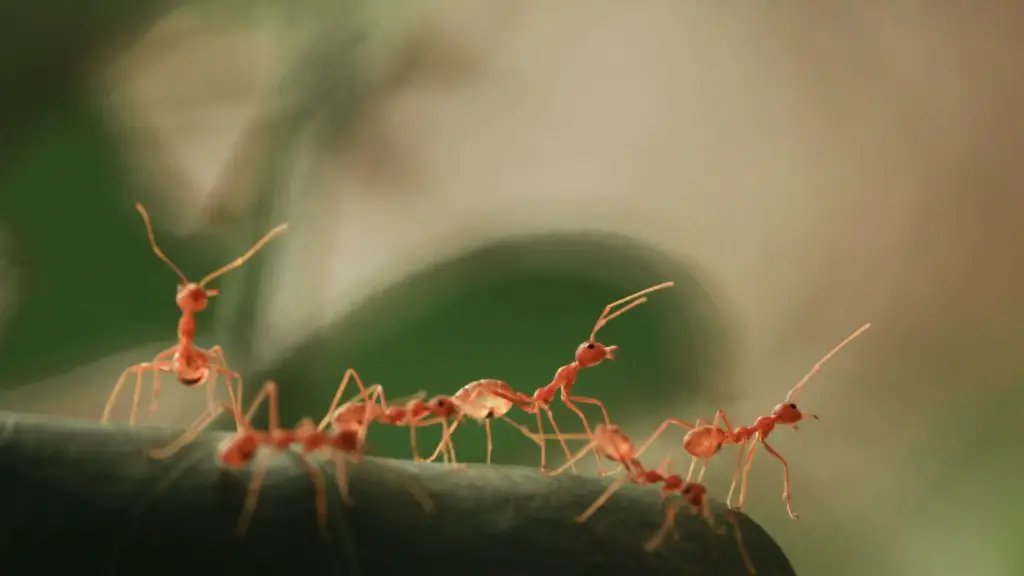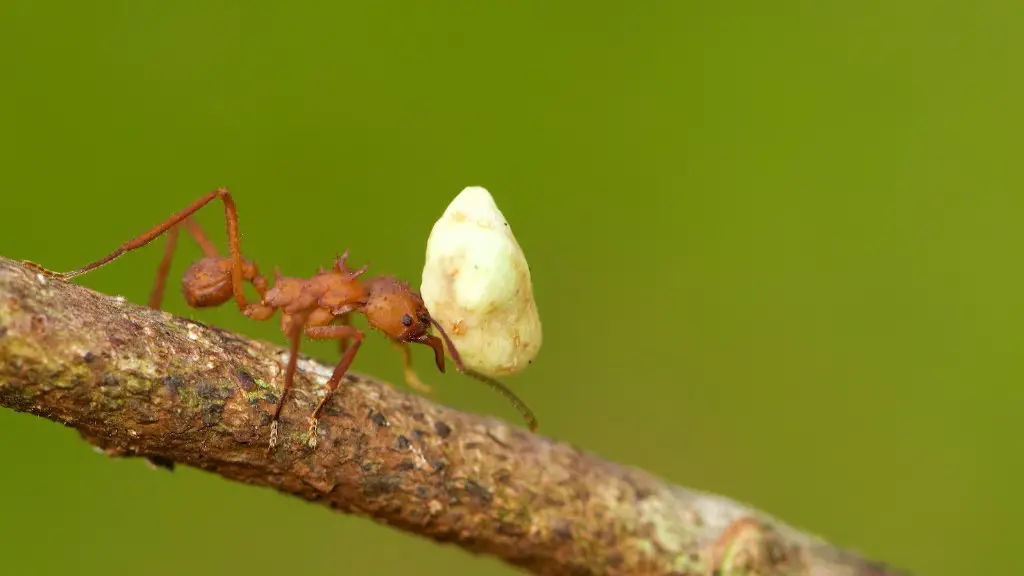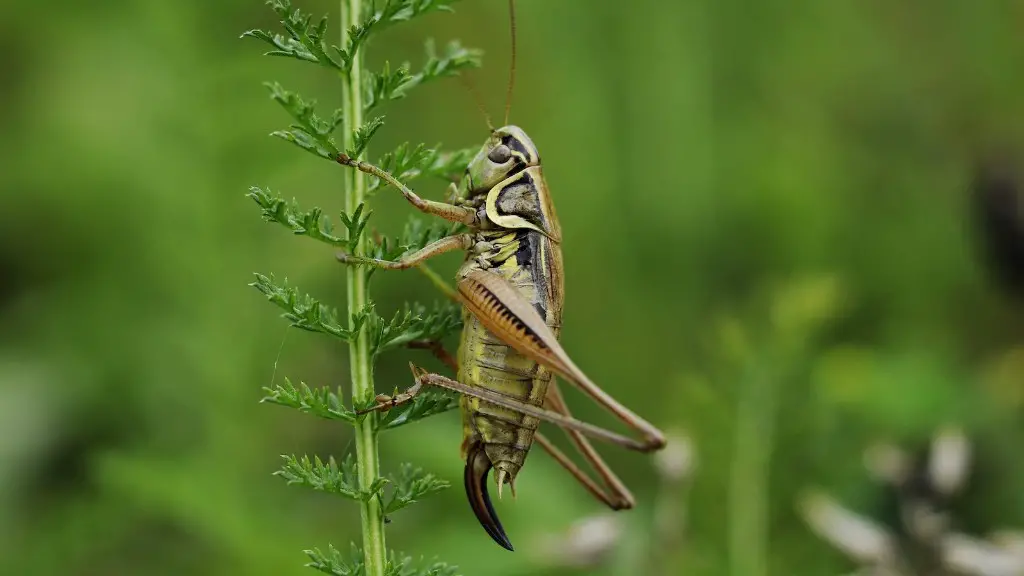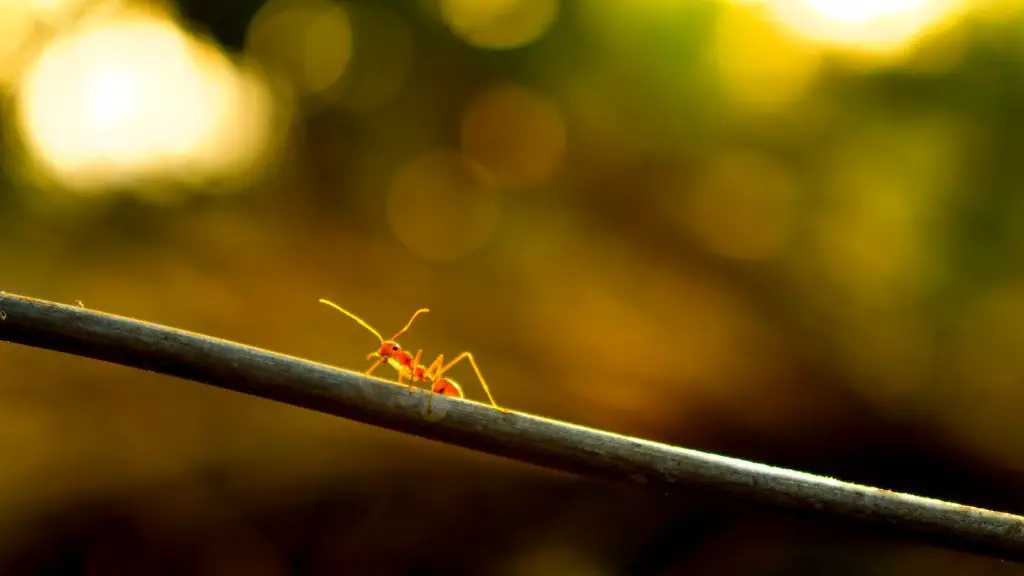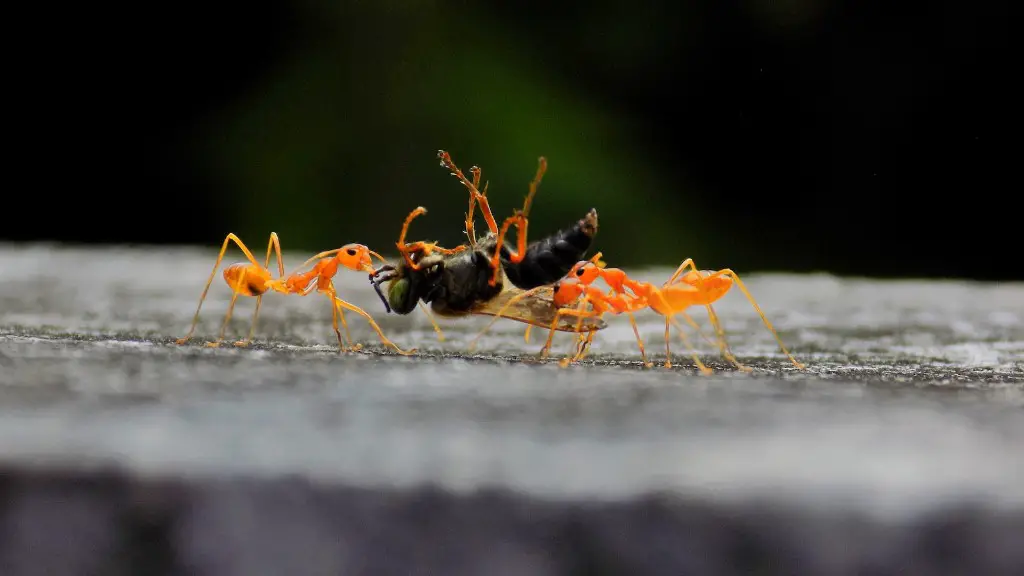Ants are amongst the most popular and visible inhabitants of the outdoor world. They are responsible for carrying away food, defending their colonies, and doing a variety of other tasks. After all, ants are the most popular type of insect on the planet. Many people take ants as a good example of cooperation, but few are aware of how they defend themselves against threats. Let us explore how ants protect their colonies and how they respond to danger.
One of the most common methods ants use to protect themselves is a process called recruitment. When an ant detects a threat or danger from other insects, it will send out pheromones that tell other ants to come and help. The other ants follow the pheromone trail and gather into defensive formations. The most typical formation is when the ants form a circle around their nest, protecting it from predators. This form of protection relies heavily on communication, as ants effectively ‘call for help’ when in danger.
The other main form of defence has to do with chemical weapons. Ants have glands in their bodies that produce various compounds, such as formic acid, which they use to defend themselves. Depending on the ant species, they may spray these hazardous compounds at their attackers, while some ants may bite, sometimes even injecting the chemical weapons with their bite. The harsh chemicals generally act as an irritant to their attackers, since the ant’s compound is strong enough to kill any microorganism.
Some ants are able to receive chemical signals that identify nearby potential threats, while other ants may use a different type of defence technique such as digging tunnels and hiding places that allow them to escape quickly. They also display a variety of behaviours, like defensive posturing and aggressive bursts, which are usually used to scare away predators.
Furthermore, some ants have an internal defence system that relies on the chemical signals or toxins that they emit from their bodies. This mechanism is used to identify any intruder and to spread an alarm throughout the colony. If an ant is being attacked, or is in a threatening situation, other ants from the colony will rush to the site, creating an intimidating and effective defence system.
Ants can further use a defensive wall to guard their colony. These walls are made up of sand, sticks and other natural materials, and they can be built in short order by countless ants. The walls can be several inches thick, which helps ants to protect their nest by blocking off potential predators.
One thing is sure—ant colonies are highly organized and sophisticated societies that defend themselves against potential threats. Through their reliable communication systems and impressive proactive defence tactics, ants are able to fight back against all kinds of predators.
Group Defense Tactics
A unique form of defence employed by ants is found in their reliance on group defence tactics. Through the collective efforts of their nest-mates, ants can usually protect the nest against larger threats. In the face of predation, countless ants will assemble and form a defensive wall around the nest. This wall can restrict or prevent access to areas of the nest vulnerable to predation or theft.
The ants also have multiple techniques to protect themselves from venomous stings or bites. If a predator invades the nest, ants will link themselves together in a living chain and will force the predator out. As this chain moves towards the predator, the ants will spray formic acid in its direction and away from the nest, thus driving the predator off.
The ants will also use defensive tactics to distract and confuse their predators. If a predator is trying to attack the nest and can’t find it, the workers will lead the predator away from the nest while the queen, soldiers, and other workers remain safe inside.
Moreover, ants use defensive strategies to protect their larvae. In the event of a serious threat, the workers will hide the larvae by dragging them away from the nest, protecting them from predators. If they themselves were to be attacked, they would sacrifice themselves to protect their young from harm.
Runaways
One of the most interesting and effective defensive strategies employed by ants is the development of runners—ants that carry food long distances from the nest to a safe location. These ants first survey the area around the nest for potential predators and, if such are detected, carry the food away from the nest to a safe location. It is thought that this strategy serves to decrease the chances of the food being stolen by predators.
In addition, the ants will often use ‘scout’ ants to identify potential threats and can set up barricades around their nest. These barricades could be made out of rocks, leaf litter, roots, or anything else that can be used to keep predators out.
When it comes to defending their nest, ants are similarly able to assess the enemy’s size and strength and adjust their strategy; the smaller the enemy, the greater the chances of success making it easier for the colony to succeed in defence.
Sense of Smell
Perhaps one of the most fascinating aspects of ant defence is their sense of smell. Ants can detect odours from a distance, making them adept at understanding potential threats as far away as several metres. Through the use of pheromones, ants can detect the presence of predators and send out warning signals to the rest of the colony, thus preparing them for a potential attack.
Ants locators can also pick up faint nuances in the air, helping them detect food sources, potential mates and live prey. This sense proves to be invaluable when it comes to avoiding predators, as they can detect threats before they even come close to the nest.
Finally, ants have a powerful sense of taste. They are able to identify food sources through sampling small amounts of the food, using their antennae and mouths to try samples of the food. This helps them avoid dangerous food sources, allowing them to steer clear of rapidly rotting or contaminated food items.
Adaptability
Ants have been able to survive for thousands of years thanks to their impressive adaptability. Along with their physical defence mechanisms, ants have developed an array of social behaviours that help them protect their nest and their food sources.
When dealing with predators and other threats, these social behaviours include the formation of defensive walls, alarm calling, worker recruitment and individual and group retreats. All of these strategies help ants to defend themselves against potential danger, no matter how big or small the threat is.
In addition, ants will defend their colonies and their food sources by forming cooperative alliances with other species, such as bees, wasps and spiders. These partnerships aide them in staving off attacks and intrusions by predators.
Ants are also able to protect their nests from extreme temperatures and toxins in their environment. They can regulate the temperature within the nest by sealing off ventilation holes and will also construct walls or burrows to protect the colony from hazardous materials.
Conclusion
Ants exemplify a remarkable level of sophistication and adaptability when it comes to defending their colonies and food sources. From pheromone-enabled communication to chemical weapons, ants make use of a wide range of tools and strategies to protect their nest from predators or any other threats. Evidently, these tactics allow them to stay safe and secure, while they also provide an invaluable insight into how complex insect societies work.
